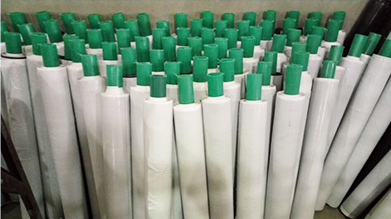How to Use Self-Amalgamating Rubber Tape
Self-amalgamating rubber tape is a versatile and innovative solution for a variety of sealing and insulating applications. Its unique properties allow it to bond to itself without the need for adhesives, making it an ideal choice for electrical repairs, plumbing, and even automotive components. In this article, we'll explore how to properly use self-amalgamating rubber tape to ensure effective and long-lasting results.
What is Self-Amalgamating Rubber Tape?
Self-amalgamating rubber tape, often referred to as self-fusing tape, is a type of tape made from a rubber compound that fuses to itself when stretched and wrapped around an object. Unlike traditional adhesive tapes, this tape does not have a sticky backing. Instead, it creates an airtight and waterproof seal through pressure and warm temperatures. This makes it particularly useful for repairing wires, insulating electrical connections, and sealing leaks in hoses or pipes.
Preparing the Surface
Before applying self-amalgamating rubber tape, it's crucial to prepare the surface properly. Start by cleaning the area where the tape will be applied. Remove any dirt, oil, or moisture, as contaminants can hinder the tape’s ability to bond effectively. If you are working with electrical wiring, ensure that power is turned off to prevent any accidental shocks.
Application Process
1. Cut the Tape Measure the length of tape required for your project. It's advisable to cut a piece that is slightly longer than the area you wish to cover to ensure a complete seal.
how to use self amalgamating rubber tape

2. Stretch and Wrap Begin by stretching the tape as you wrap it around the object. Overlap the tape by at least half its width with each turn to create a secure seal. This is crucial because the fusible properties of the tape work best under tension.
3. Maintain Tension Keep the tape stretched while applying it. This helps activate the self-amalgamating properties and ensures a strong bond. Avoid wrapping the tape too loosely, as it may not fuse properly.
4. Finish the Wrapping Once you have wrapped the area sufficiently, press the end of the tape against the underlying layer. The tape will fuse to itself, creating a waterproof barrier.
5. Curing Time Allow the tape to cure for a short period. While it can often create an effective seal immediately, giving it time to set will enhance its durability.
Applications
Self-amalgamating rubber tape can be used in various applications - Electrical Insulation It is perfect for insulating exposed wires or repairing damaged electrical connections. - Pipe Sealing Use it to seal leaks in plumbing or hoses, creating a waterproof and airtight seal. - Automotive Repairs The tape can be used in vehicles to provide insulation or to secure loose components.
Conclusion
Using self-amalgamating rubber tape is straightforward, but proper application is key to achieving satisfactory results. With its ability to insulate, seal, and protect against moisture and air, this tape is an essential tool for both professionals and DIY enthusiasts alike. Keep these tips in mind for effective use, and you'll find this innovative tape indispensable in your repair toolkit.
-
XIANGFAN Rubber Tape-Ultimate Solutions for All Your Insulation NeedsNewsJun.24,2025
-
XIANGFAN Rubber Tape-Protection for Industrial and Residential ApplicationsNewsJun.24,2025
-
XIANGFAN Rubber Tape: Superior Safety and Sealing for Demanding EnvironmentsNewsJun.24,2025
-
XIANGFAN Rubber Tape: Reliable Solutions for Every Electrical ChallengeNewsJun.24,2025
-
XIANGFAN Electrical & Industrial Tape: Powering Reliability Across IndustriesNewsJun.24,2025
-
XIANGFAN Electrical & Industrial Tape: Excellence in Every ApplicationNewsJun.24,2025
